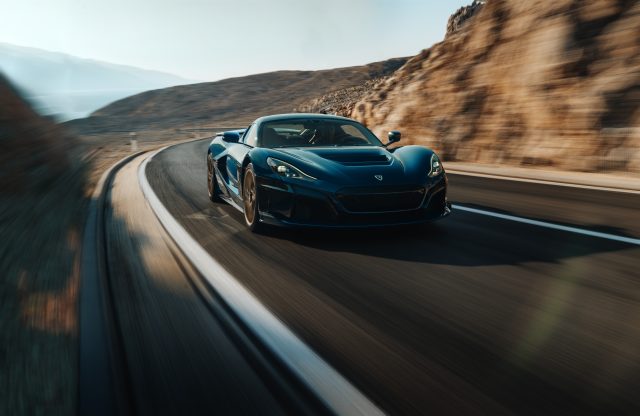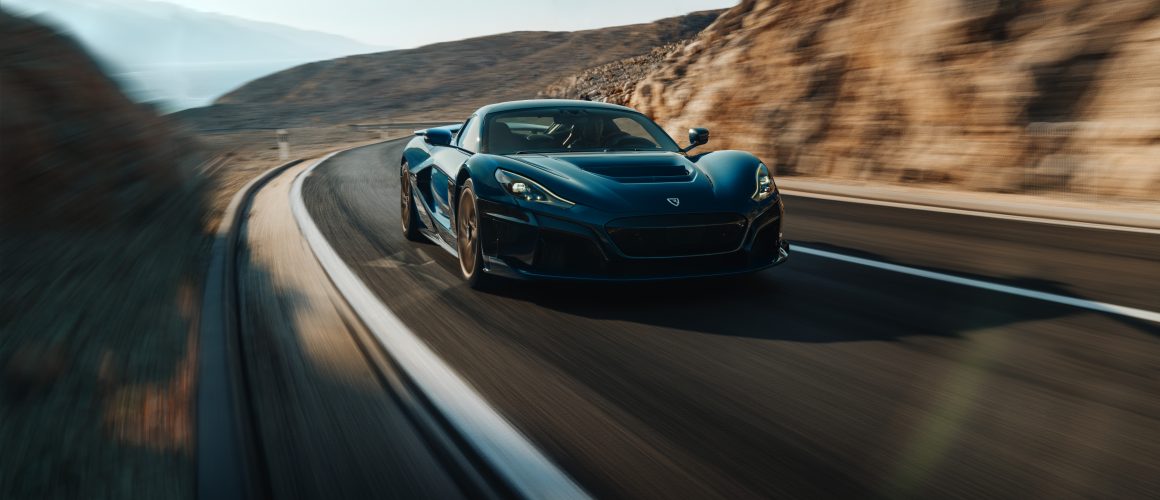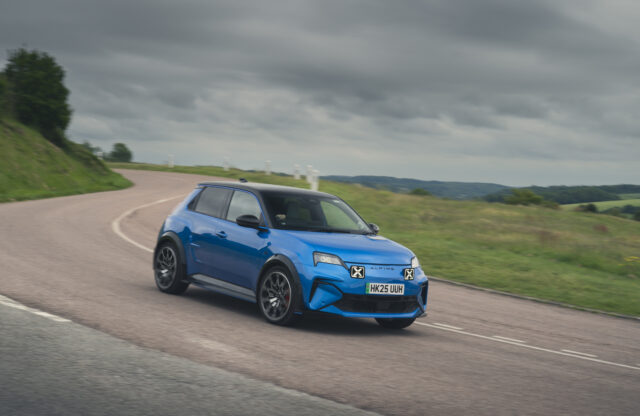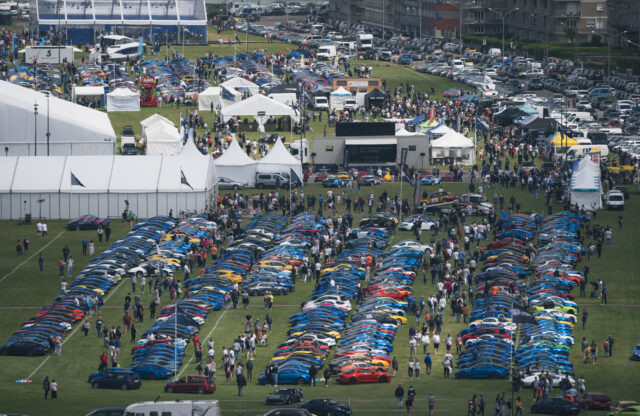WORDS: ELLioTT HUGHES | PHOTOGRAPHY: RIMAC/ELLIOTT HUGHES
Thumbing through my post-test drive notes for the all-electric Rimac Nevera reads like a hyperbolic selection of adjectives from the Oxford Dictionary. ‘Alarming’, ‘violent’, ‘extreme’, ‘mesmerising’ – bombastic words excitedly underlined in black biro at the side of a frigid test track. In this line of work such things are typically frowned upon, but on this occasion, it feels justified.
Before you accuse me of getting too carried away, here are the headline figures: 1888bhp (or about 15 Toyota Corollas), 1741lb ft of torque (nearly twice that of a Bugatti Veyron) and €2m ($2.4m). Exchange those figures for speed, and you get 0-62mph in 1.85 seconds and 0-186mph in 9.3 seconds, which is enough for a custodial sentence in the unlikely event the police can keep up with you. The most surprising thing about the Nevera, however, is that it is so much more than the ultimate Top Trumps card.
I first see the Nevera on a cold, foggy morning outside Rimac’s headquarters in Zagreb, Croatia. Finished in lustrous silver paintwork, its bodywork is smoother and more elegant than many hypercars, despite its collection of purposeful vents, active rear wing and scowling headlights. It’s also a machine that’s proud to flaunt its heritage; the air intakes on its flanks are sculpted to resemble the bow ties sported by Croatian soldiers in the 17th century.
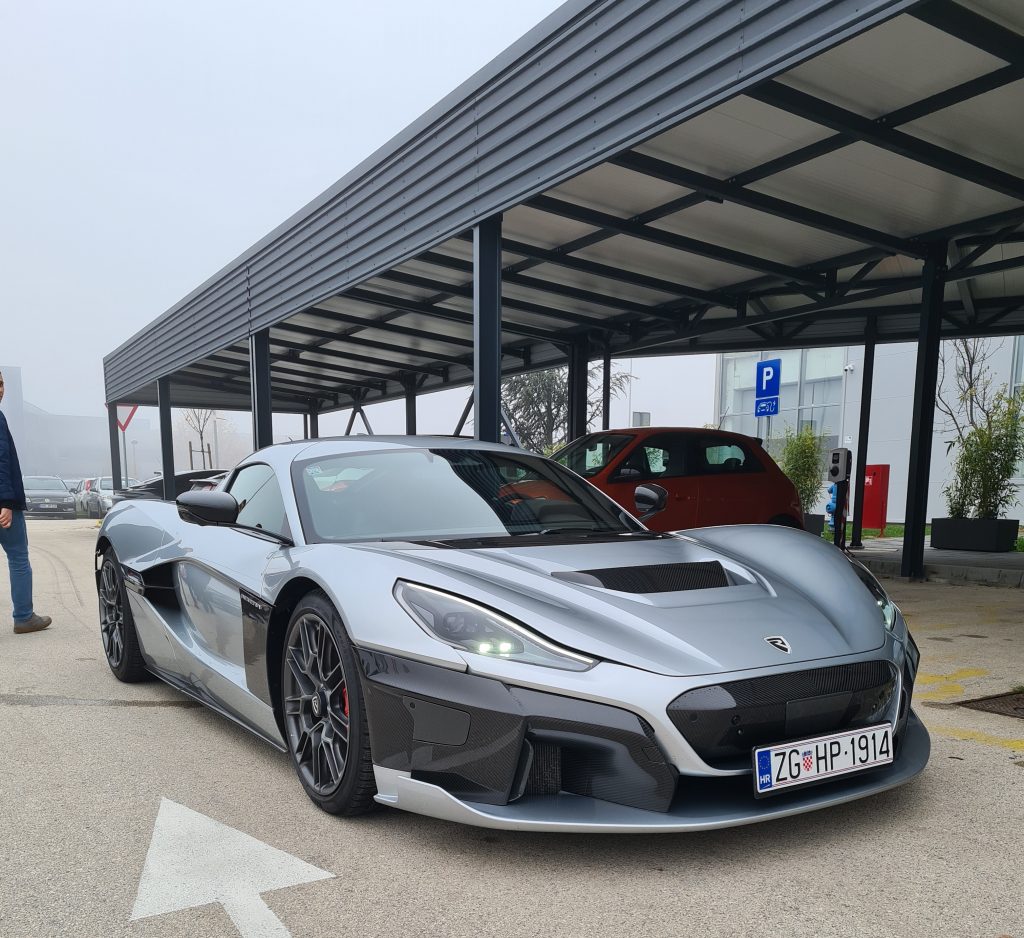
Reach into that bowtie-shaped crease and you’ll find a hidden door handle. Press it and the car’s dihedral door dramatically opens skywards, revealing a cocoon of bare carbon, Alcantara and CNC-milled aluminium, punctuated by Nevera and Rimac motifs. As with the rest of the car, the interior is completely bespoke, and the quality of fit and finish belie the company’s short 13-year tenure as an automotive manufacturer.
Climb into the supportive, comfortable embrace of the Sabelt-supplied seats, and you’re greeted by a digital instrument display and a large screen above the centre console. Another screen is set into the dashboard in front of the passenger, and displays everything from power output to G readings and speed.
Happily, you don’t need to swipe your way through endless menus to access the car’s major functions. Instead, they’re controlled via a bank of toggle switches and three milled rotary dials that sit proud of the dashboard. Sat-nav primed, I rotate the far-left dial to find Drive. It turns with a satisfying click reminiscent of the bezel on a luxury watch.
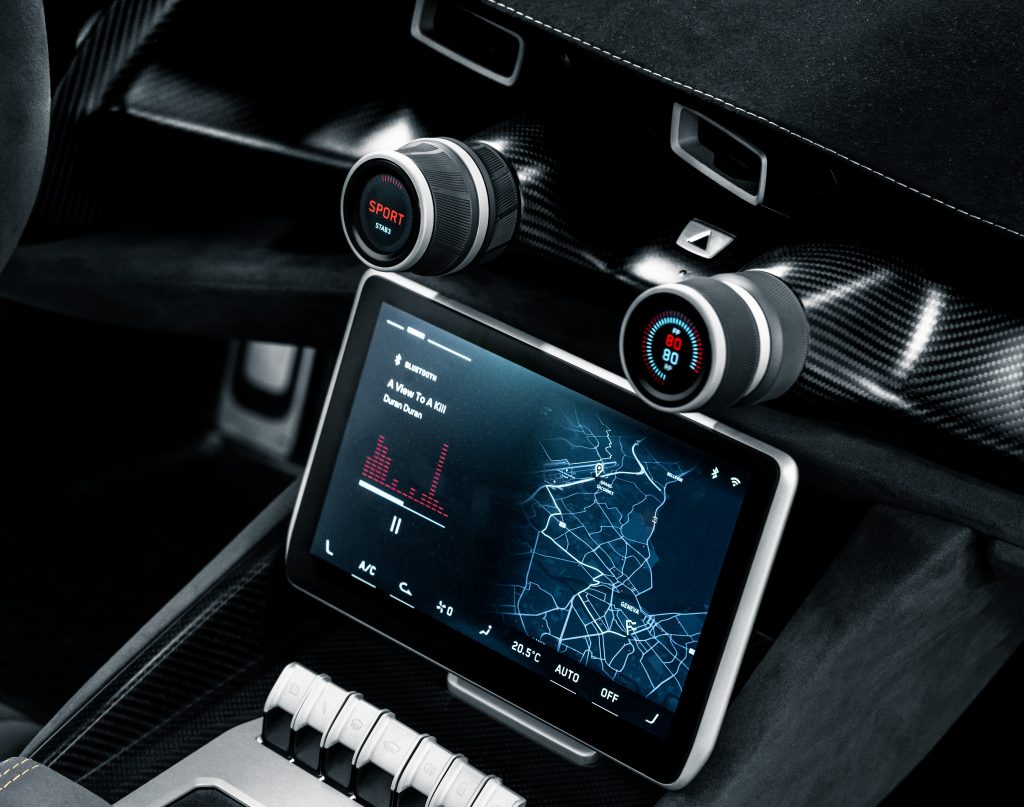
Out on the open road, and with the car set in Comfort, there’s little to suggest there’s such otherworldly performance lurking just a few inches beneath the sole of your right foot. The steering is light, the ride is comfortable and compliant, and the Nevera quietly meanders through Zagreb’s morning traffic with minimal fuss. Ignore the smartphone paparazzi of your fellow drivers and the occasional pitch of that rear wing, and you could easily be in a Porsche Taycan.
Ominously, the morning fog has thickened significantly by the time I reach the test track. My sense of foreboding only increases as I withdraw to the passenger seat so that test driver Miroslav Zrnčević can show me the track layout and warm up the Michelin Pilot Sport 4 tyres on the cold, slippery asphalt. With the car in Sport Mode and administering just 70 percent of its power, my body is subjected to breathless bursts of acceleration. My irises dart to aspects of the scenery, desperately attempting to pick out cones and braking markers as we sear myopically towards the next bend.
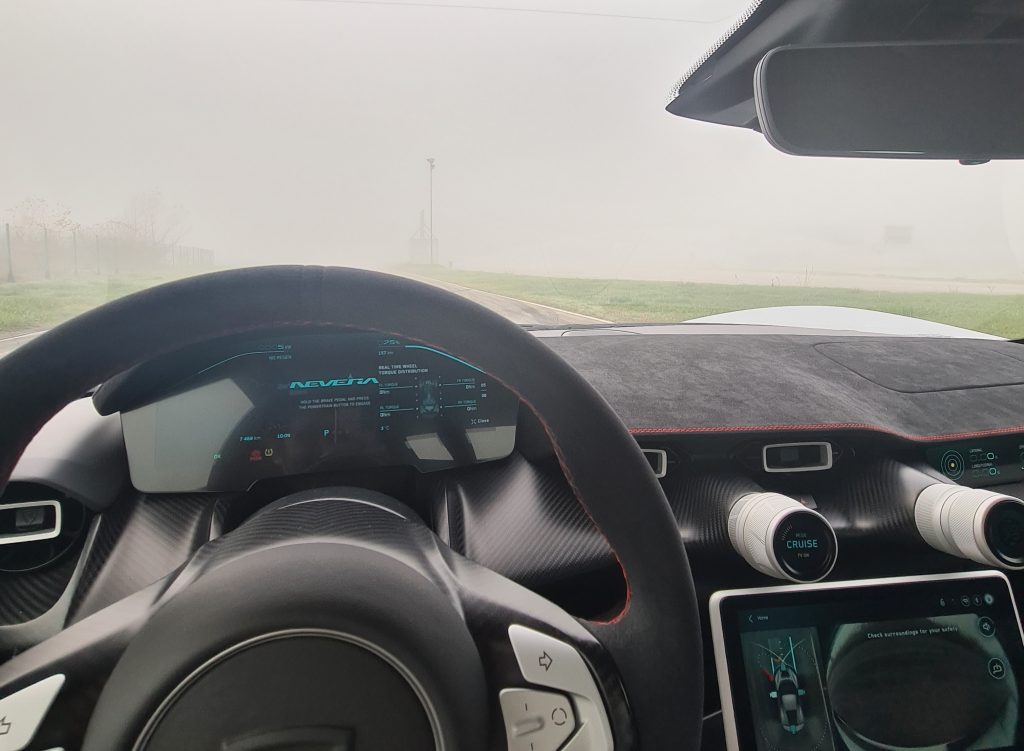
After four or five laps I’m back in the driver’s seat, sheepishly heading out for my maiden lap, now all too aware that this is more than twice as powerful and ten times more expensive than the fastest car I’ve ever driven, a McLaren 720S. The track is almost comically short for such a potent machine, with only one medium-length straight to interrupt a selection of sweeping corners and hairpin bends. With the car still in Sport mode, I complete a tentative few laps to learn the track layout and familiarise myself with the $2m missile I’ve been entrusted with.
What happens next is surprising. Despite the terrible visibility, ice-cold track surface and near 2000bhp at my disposal, I start to feel comfortable and push the car harder and harder, lap after lap. The other good news is the noise, which Rimac has resisted the temptation to artificially synthesise. Far from an uninspiring, sterile soundtrack, the four electric motors emit a banshee-like whine as the car picks up speed, before conducting a spaceship-like groan under braking.
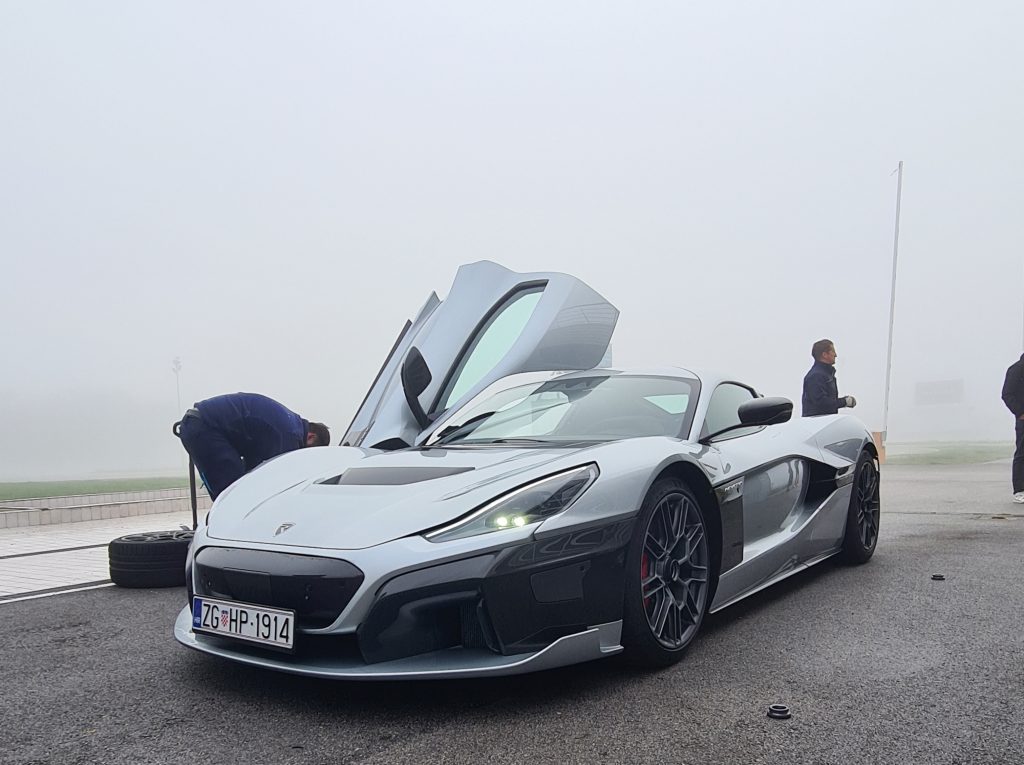
It soon becomes clear that, through engineering witchcraft, the Nevera is far less intimidating than cars I’ve driven with less than a quarter of the power. It’s all made possible by the onboard supercomputer, which is fed by nine onboard cameras, LIDAR, radar, in-seat sensors and 12 ultrasonic sensors that produce up to 6TB of data per hour of driving. This allows the super-advanced Rimac All-Wheel Torque Vectoring (R-AWTV) system to process 100 calculations per second. Not only does all this reduce the chances of an undignified accident, but it also feels totally organic, and fools you into believing you’re the next Senna.
Now feeling confident, I’m encouraged to wind the right-hand dial into Track mode, which delivers 100 percent of the Nevera’s alarming 1888bhp. The acceleration is devastating, pinning my head against the seat and almost blurring my vision before I smash the brake pedal and let the massive six-piston front and rear Brembo calipers punishingly squeeze the carbon-ceramic discs.
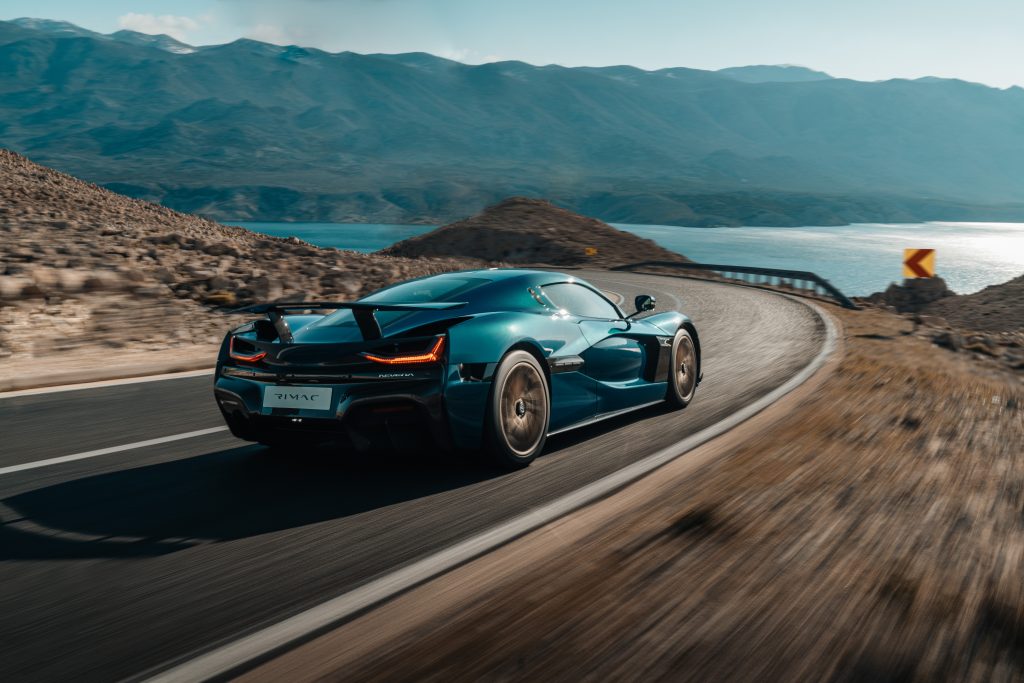
The brakes are perhaps the most unconventional part of the car in terms of feel. The onboard computer continuously prioritises how much of the stopping power is yielded by the regenerative braking or the hydraulic brakes based on which is the most thermally limited. The feeling through the pedal is one of graininess, but it isn’t unnerving and it recedes into the background once you’re used to it.
In the tight corners the Nevera hides its 2150kg kerbweight excellently. This is aided by the unique ‘H’-shaped battery pack that provides a low centre of gravity alongside the stiffest carbonfibre tub ever fitted to a road car. Combine this with the excellent adjustable dampers, and body roll is imperceptible in Sport, Track and Drift modes.
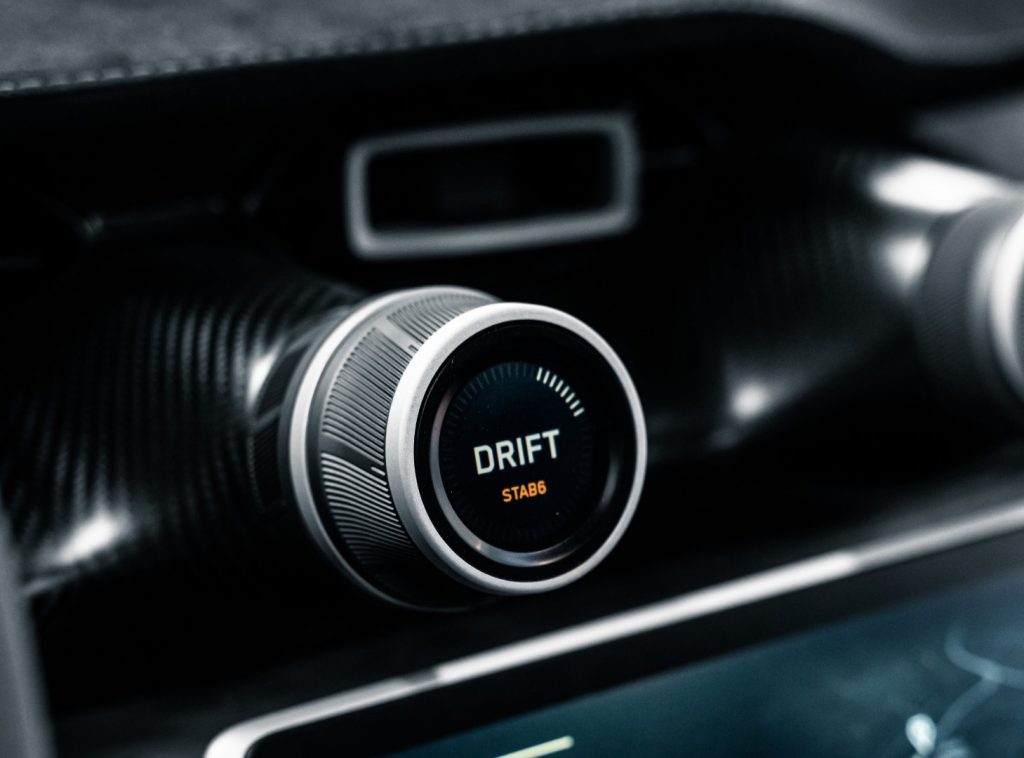
Drift mode is one of the most memorable parts of test driving a Nevera, and one that I wouldn’t have dreamed of toying with prior to climbing into it. The drift course is effectively a donut of asphalt with a lamppost sitting in the middle like a dart lodged in a bullseye. With Drift mode enabled, simply crank the steering to the left, mash the throttle and giggle as you transform your tyres into a thick rooster tail of smoke while the computers do the rest.
After driving the Nevera you feel you’ve had a genuine glimpse into the future. It’s a car that seems exempt of compromise: it’s sci-fi fast, exotic and well built while being approachable, refined and comfortable. The only flaws to speak of are the price, the bizarre omission of cruise control, and the display screens that could be clearer for a car with so much power.
The Nevera was named after the Croatian word for a mighty electrical storm that appears suddenly along the Adriatic coast. It’s an apt name for a car that has both shocked the establishment and makes way for a brighter future once its technology trickles down into more attainable models.
